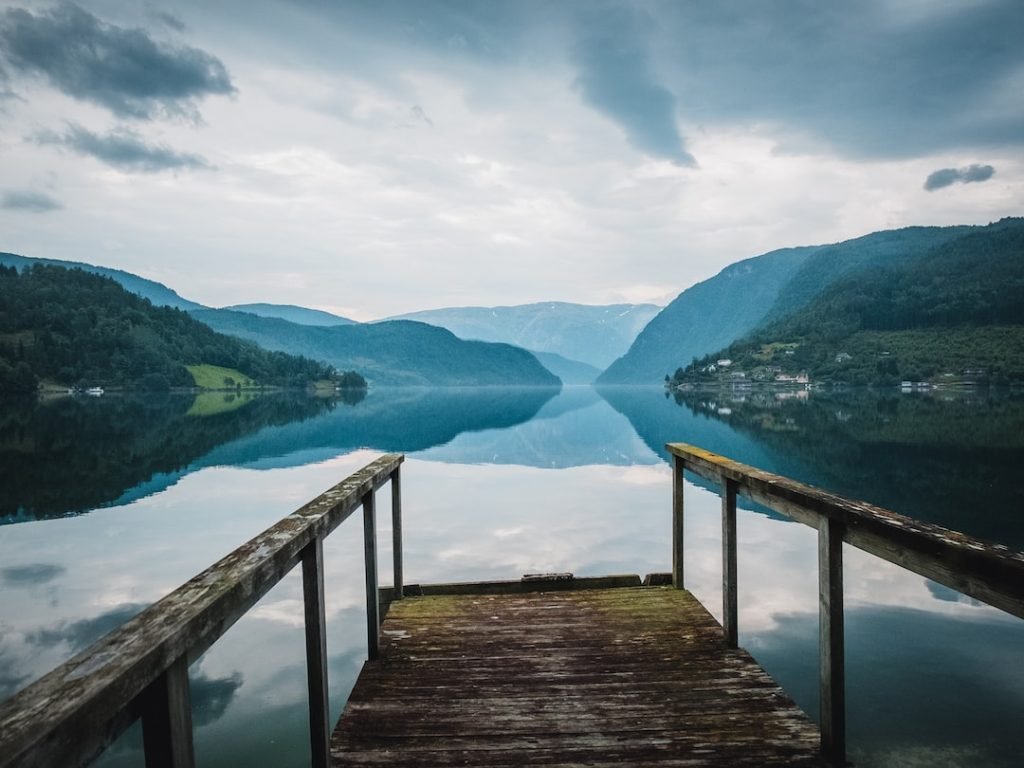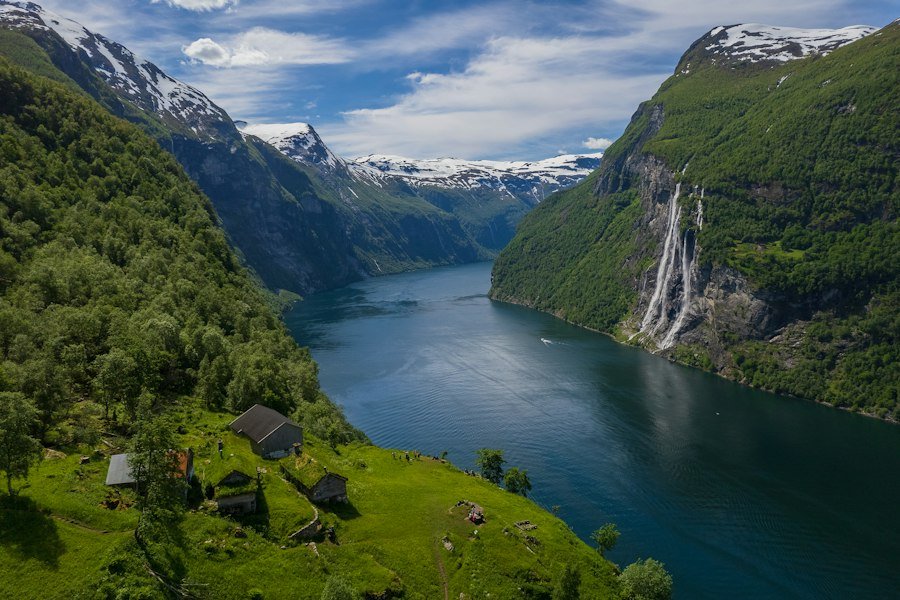

10 Norwegian Landmarks and Their Descriptions
Norway, known for its stunning natural beauty and rich cultural heritage, is a country that captivates the hearts of travelers from around the world. From its majestic fjords to its Viking history, Norway offers a plethora of attractions that are sure to leave visitors in awe. Whether you are a nature lover, history enthusiast, or adventure seeker, Norway has something to offer for everyone. In this article, we will explore some of Norway’s top attractions and delve into the beauty and significance of each.
Table of Contents
ToggleKey Takeaways
- Norway’s fjords are a nature lover’s paradise, offering breathtaking views and opportunities for outdoor activities.
- The Bryggen Wharf in Bergen provides a glimpse into Norway’s Hanseatic past and is a must-visit for history buffs.
- The Viking Ship Museum offers a fascinating look into Norway’s Viking heritage, showcasing well-preserved artifacts and ships.
- The Northern Lights are a natural wonder of Norway, providing a stunning display of colors in the night sky.
- Stave churches in Norway are a unique blend of Christian and Viking architecture, showcasing intricate woodwork and historical significance.
The Majestic Fjords of Norway: A Nature Lover’s Paradise
Norway’s fjords are undoubtedly one of its most iconic natural wonders. These deep, narrow inlets carved by glaciers offer breathtaking views of towering cliffs, cascading waterfalls, and crystal-clear waters. The fjords not only provide a stunning backdrop for photography enthusiasts but also offer a range of activities for outdoor enthusiasts.
One of the most popular fjords to visit is the Geirangerfjord, a UNESCO World Heritage Site. Known for its dramatic landscapes and picturesque villages, the Geirangerfjord offers opportunities for hiking, kayaking, and boat tours. Another must-visit fjord is the Hardangerfjord, which is the third longest fjord in the world. Here, visitors can explore charming villages, hike to stunning viewpoints, and even go skiing in the winter months.
The Iconic Bryggen Wharf: A Glimpse into Bergen’s Hanseatic Past
Located in the city of Bergen, the Bryggen Wharf is a UNESCO World Heritage Site that offers a glimpse into Norway’s Hanseatic past. The wharf dates back to the 14th century when it served as a hub for trade between Norway and other European countries. Today, it is a bustling area filled with colorful wooden buildings that house shops, restaurants, and museums.
Visitors to the Bryggen Wharf can explore the narrow alleyways, visit the Hanseatic Museum, and learn about the history of the wharf and its importance to Bergen. The area is also known for its vibrant cultural scene, with art galleries, theaters, and music venues scattered throughout. Additionally, the wharf is a great place to sample traditional Norwegian cuisine, such as fresh seafood and reindeer dishes.
The Viking Ship Museum: A Fascinating Look into Norway’s Viking Heritage
Norway has a rich Viking history, and one of the best places to learn about it is at the Viking Ship Museum in Oslo. The museum houses three well-preserved Viking ships that were excavated from burial mounds in the Oslofjord region. These ships, dating back to the 9th century, provide a fascinating insight into the seafaring and trading culture of the Vikings.
In addition to the ships, the museum also displays a range of artifacts found in the burial mounds, including weapons, tools, and household items. Visitors can learn about the daily life of the Vikings, their religious beliefs, and their impressive shipbuilding skills. The museum also offers interactive exhibits and guided tours that bring the Viking era to life.
The Spectacular Northern Lights: A Natural Wonder of Norway
The Northern Lights, also known as Aurora Borealis, are a natural phenomenon that occurs in polar regions. Norway is one of the best places in the world to witness this breathtaking display of lights dancing across the night sky. The Northern Lights are caused by charged particles from the sun colliding with atoms in Earth’s atmosphere, creating colorful displays of light.
The best time to see the Northern Lights in Norway is during the winter months, from September to March. The northern regions of Tromsø and Svalbard are particularly popular for Northern Lights viewing due to their proximity to the Arctic Circle. Visitors can join guided tours, go on dog sledding or snowmobile excursions, or simply find a cozy spot to watch the lights from.
The Beautiful Stave Churches: A Unique Blend of Christian and Viking Architecture

Stave churches are a unique architectural feature of Norway, blending elements of Christian and Viking design. These wooden churches, built during the Middle Ages, are characterized by their intricate carvings, dragon heads, and steep roofs. They are a testament to Norway’s rich cultural heritage and are considered national treasures.
One of the most famous stave churches in Norway is the Urnes Stave Church, which is a UNESCO World Heritage Site. Dating back to the 12th century, it is known for its ornate carvings and its location on the shores of the Lustrafjord. Other notable stave churches include the Borgund Stave Church and the Heddal Stave Church, both of which are open to visitors.
The Mighty Trolltunga: A Hiker’s Dream Destination
For adventure seekers and hiking enthusiasts, Trolltunga is a must-visit destination in Norway. Located in the Hardangerfjord region, Trolltunga is a rock formation that juts out horizontally from a cliffside, offering panoramic views of the surrounding mountains and fjords. The hike to Trolltunga is challenging but rewarding, taking approximately 10-12 hours round trip.
The trail to Trolltunga is well-marked but requires a good level of fitness and proper hiking gear. Along the way, hikers will pass through diverse landscapes, including forests, lakes, and rocky terrain. Once at Trolltunga, visitors can take in the breathtaking views and capture memorable photos on the iconic rock ledge.
The Stunning Geirangerfjord: A UNESCO World Heritage Site
Geirangerfjord is often referred to as the crown jewel of the Norwegian fjords. This UNESCO World Heritage Site is known for its dramatic landscapes, including towering waterfalls, snow-capped mountains, and lush green valleys. The fjord is best explored by boat, with several cruise options available for visitors.
During a cruise on the Geirangerfjord, visitors can marvel at the Seven Sisters waterfall, which consists of seven separate streams cascading down the mountainside. They can also witness the breathtaking beauty of the Geiranger Skywalk, a viewing platform that offers panoramic views of the fjord and surrounding mountains. For those seeking adventure, kayaking and hiking are popular activities in the area.
The Historical Akershus Fortress: A Symbol of Norway’s Military Past
Located in Oslo, the Akershus Fortress is a medieval castle that has played a significant role in Norway’s military history. Built in the 13th century to protect Oslo from foreign invasions, the fortress has witnessed numerous battles and sieges throughout the centuries. Today, it stands as a symbol of Norway’s resilience and independence.
Visitors to the Akershus Fortress can explore its well-preserved walls, towers, and courtyards. They can also visit the Norwegian Resistance Museum, which tells the story of Norway’s resistance movement during World War
The fortress offers stunning views of Oslo’s harbor and is a popular spot for picnics and outdoor concerts during the summer months.
The Scenic Flåm Railway: A Journey through Norway’s Breathtaking Landscapes
The Flåm Railway is considered one of the most scenic train journeys in the world. This 20-kilometer railway takes passengers from the mountain village of Myrdal to the picturesque village of Flåm, passing through steep valleys, cascading waterfalls, and snow-capped mountains along the way. The journey offers breathtaking views at every turn and is a must-do for train enthusiasts and nature lovers alike.
The Flåm Railway is known for its engineering marvels, including its steep gradient and numerous tunnels. The train also makes a stop at the Kjosfossen waterfall, allowing passengers to disembark and take in the majestic beauty of the cascading water. At the end of the journey in Flåm, visitors can explore the village, go on fjord cruises, or rent bikes to explore the surrounding area.
The Picturesque Lofoten Islands: A Haven for Adventure Seekers and Photographers
The Lofoten Islands are a group of islands located above the Arctic Circle in northern Norway. Known for their dramatic landscapes, pristine beaches, and charming fishing villages, the Lofoten Islands are a haven for adventure seekers and photographers. The islands offer a range of activities, including hiking, fishing, kayaking, and wildlife spotting.
One of the most popular activities on the Lofoten Islands is hiking to the summit of Reinebringen. This challenging hike rewards hikers with panoramic views of the surrounding mountains and fjords. Another must-visit spot is the village of Henningsvær, known for its picturesque harbor and vibrant art scene. Visitors can also take boat tours to see puffins, sea eagles, and seals in their natural habitat.
Norway’s natural beauty and cultural heritage make it a truly unique destination that should be on every traveler’s bucket list. From the majestic fjords to the Viking history, there is something for everyone to enjoy in this Scandinavian gem. Whether you are exploring the iconic Bryggen Wharf in Bergen or witnessing the Northern Lights in Tromsø, Norway offers an unforgettable experience that will leave you wanting more. So pack your bags and get ready to embark on an adventure through Norway’s breathtaking landscapes and rich history.
If you want to learn Norwegian, you can register for classes here. We look forward to hearing from you and helping you become fluent in Norwegian.





